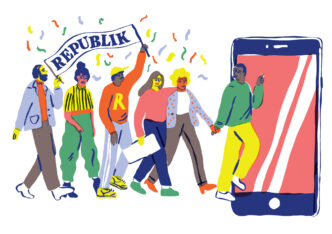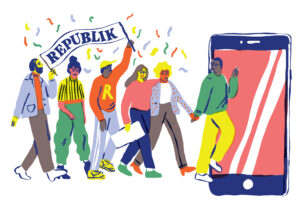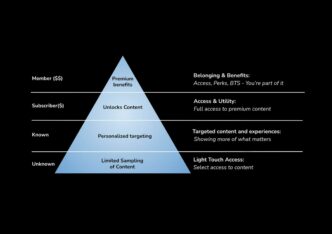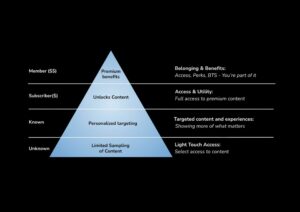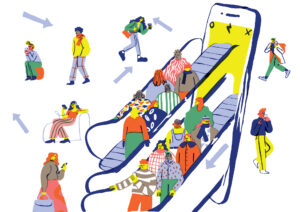

This year, AI has created a major buzz in the media world (and maybe in every other industry too!).
If you’re into AI and journalism like me, you might’ve felt some serious FOMO with events like the recent Perugia Festival in Italy and the Nordic AI in Media Summit.
And whilst the discussions are interesting, there’s a lot of talk of ‘potentials’ and questions of what might be possible in the future. But let’s cut through the noise: how are newsrooms actually using AI today?
I’ve chatted with different AI leaders in Europe and North America, including Hearst, Gannet, Newsquest and L’Équipe, to find out.
1. Gannet: article summarization and daily horoscopes generated by AI
Gannett | USA Today, one of the leading publishers in the US, started shaping their AI use last year, rolling out two different use cases:
- AI-generated bullet points. These offer a preview to the user as “a way to drive interest, and have the user enter the conversion funnel”, explains Amelie Sutton, product manager at Gannett | USA Today. They are reviewed by editors before publication however
- Daily horoscopes. What started as an article that had to be reviewed and updated daily, is now a template which natural language generation transforms into an article. Suttons shares how “it’s a very low-risk effort, we are only using data from a third-party provider. We use the same template for the lottery, and right now, it’s fully automated. It’s pretty successful and something that people search for”.
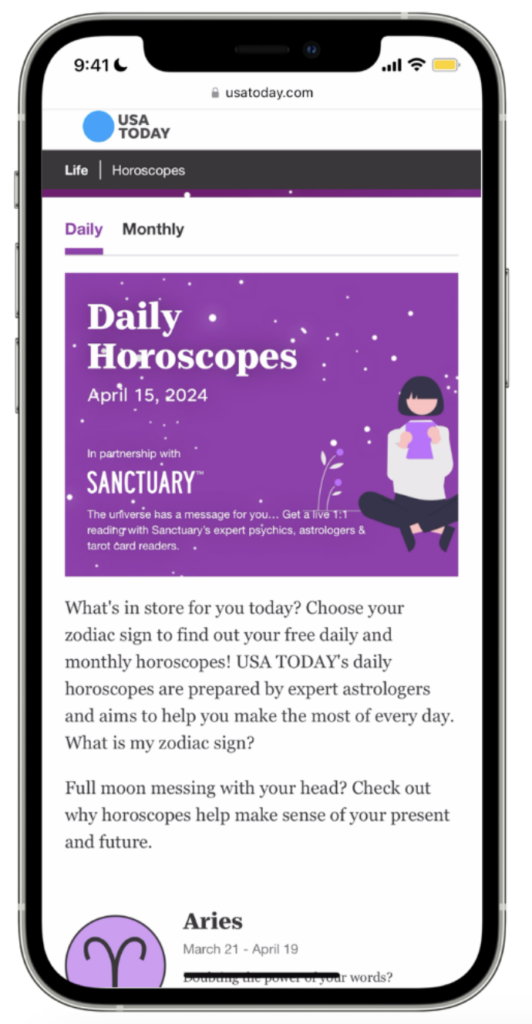
2. NewsGames: building quizzes and crosswords with AI
Since the rise of gaming apps (think The New York Times, Apple News and The Telegraph), puzzles, crosswords, and other traditional media fixtures have gained renewed prominence in publishers’ strategies.
But how can local newsrooms, who don’t have the ability to dedicate teams or invest heavily, capitalize on this trend?
Meet Bill Miles and Kevin McCurdy, a pair of tech entrepreneurs, who founded NewsGames, a platform dedicated to crafting puzzles, quizzes, and crosswords tailored specifically for local newsrooms. Their mission? To engage audiences, reduce churn, and create a strong experience around local news.
Utilizing GenAI, the platform enables newsrooms to effortlessly generate quizzes and crosswords. These interactive games can seamlessly integrate into any website or newsletter.
Each game is meticulously customized for the local newsroom. The only requirement being to input article URLs, images, podcast links, and other content elements. Newsrooms can personalize the appearance by adjusting logos, colors, and fonts, ensuring seamless integration with their platforms.
“Generating a fully-fledged quiz written by AI only takes a few minutes,” remarks Bill, emphasizing the platform’s efficiency. “Our top priority is engagement and finding innovative ways to attract audiences to the local market,” he adds.
The company firmly believes that local newsrooms can “quizzify” a broader spectrum of content, extending beyond news to encompass politics, sports, entertainment, and more.
“As quiz creation becomes simpler, we anticipate a surge in their popularity because customers enjoy them. They’re fun, engaging, and offer a fresh way to consume news—especially on mobile devices,” Bill Miles says.
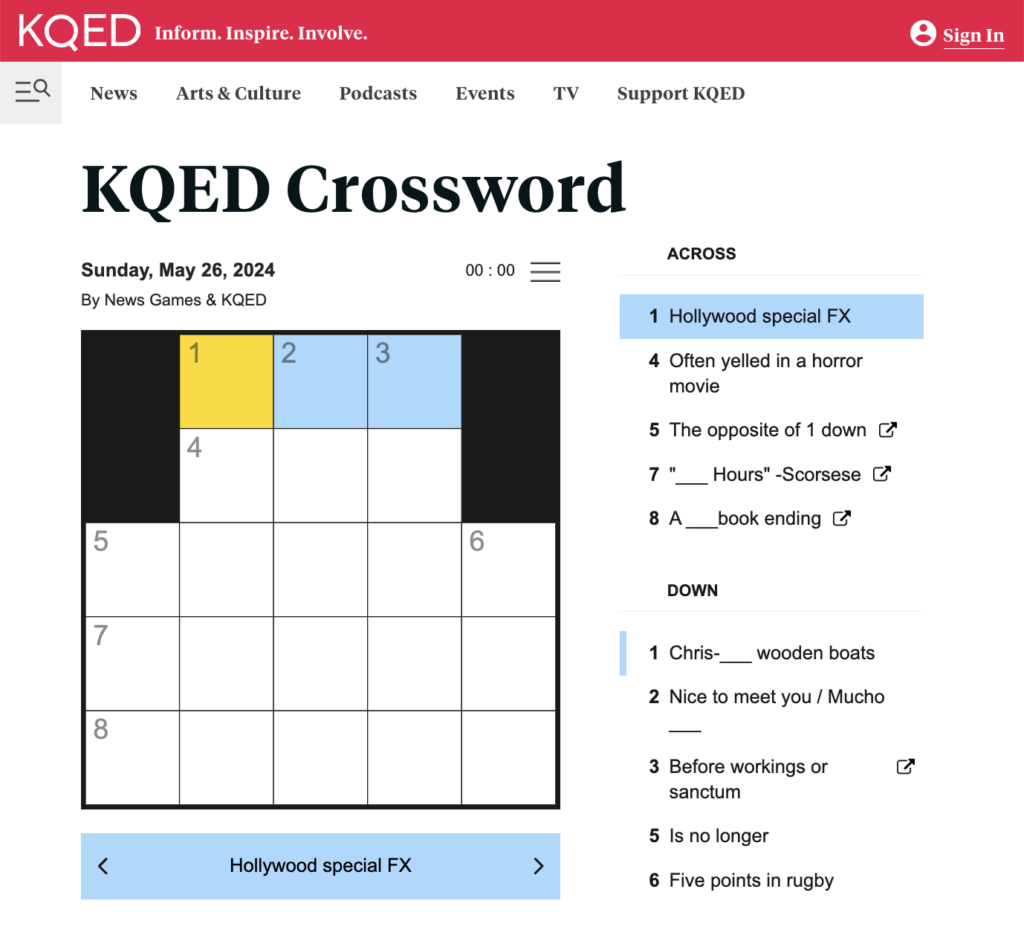
> To read next: How DN leveraged gamification to attract a younger audience, and got almost 35,000 new registered users
3. L’Équipe: Leveraging AI to summarize comments and drive engagement
L’Equipe is a leading daily sports newspaper, TV channel and digital platform. As their team started to explore how AI could be leveraged across the brand, they wanted to put it to use in improving the user experience for community members. Indeed, L’Équipe has a very strong following of users who not only read articles but interact with the site too. More than 400,000 comments a month for 12 millions unique visitors/month.
“Our readers love to read comments, and certain articles can generate 1,500 to 2,000 comments”, says Emmanuel Alix, director of digital at L’Equipe.
Users don’t have to subscribe to leave a comment. They do, however, have to create a free account to read or add a comment. Once registered, the user enters the top of the conversion funnel and is 15 times more likely to subscribe, says Emmanuel.
To increase the value of the comments section even further, the team has developed an AI tool to summarize the comments in a drop down box placed within the comments section. Just a single article can generate more than 300 summaries from the comments section.
With this new tool, the L’Equipe team can track how many users click on the “read more” tab to read the full summary. So far, more than 200,000 users have used the feature and the feedback is positive.
L’Equipe uses OpenAI to generate summaries. The tool isn’t perfect yet, says Emmanuel Alix, but AI does offer certain opportunities for the media.
> To add to your reading list: Changing the way we do paid: how L’Équipe halved subscriber acquisition costs whilst increasing both attribution and last-click subscriptions
4. San Francisco Chronicle, Hearst Media: meet ChowBot, your AI-powered restaurant guide
AI tools are rapidly evolving. How can Hearst newspapers, which include leading local newsrooms such as the San Francisco Chronicle and the Houston Chronicle, and their teams experiment with it?
Tim O’Rourke, VP of Content Strategy, leads the Dev Hub, an innovative team in Hearst media. His team leads the efforts for the digital innovation for Hearst’s newspapers with data-visualization and interactive projects.
Naturally, Tim’s team came to experiment with AI. The mindset is to experiment whilst still holding themselves to a high standard and not eroding the public’s trust. “In some areas, the technology is just not good enough yet. We don’t want to be taking risks with our reputation,” Tim explains.
But they still see huge potential for AI in their work. Production P, for instance, is an internally developed tool to help editors in some of their smaller newsrooms create summaries, and tweak headlines. On the reader-facing side, Tim’s approach is to be very careful.
Their first AI-powered user-facing product is the “Chowbot”, an AI-powered chatbot that went live in February on the San Francisco Chronicle’s website, helping readers find recommended restaurants and specific dishes in the Bay Area. As the chatbot only uses verified data from the San Francisco Chronicle, the risks of hallucinations and errors are limited.
Chowbot is reserved for the Chronicale’s subscribers only and was already being used by 10,000 users just a month and a half after its debut.
5. Newsquest: an assistant tool to help local journalists spend more time in their community
When I talked to Jody Doherty-Cove, he was just back from the Nordic AI in Media summit. As Head of Editorial AI for the the second largest media group in the UK, Jody has a lot to share about the impact AI can have for journalists.
The media group owns more than 250 local titles – including the Berrow’s Worcester Journal, the oldest surviving newspaper in the world.
“We have AI-assisted reporters using AI tools to help speed up certain tasks”, says Jody. For example, an internal GPT, that writes articles from trusted sources.
“We only use trusted sources that can be transformed into a media article”, says Jody. In smaller newsrooms, reporters would often have to produce content at scale. But with the help of this tool, they have more time to report on the ground, develop sources and be part of the community they are covering.
Newsquest papers have seen success thanks to these tools. Subscriptions are up, says Jody, and page views are also doing well.
“But we also can’t quantify the impact on the editors themselves. They have more free time on their deadline days”, he adds.
Bringin AI to the newsroom hasn’t been as hard as one can imagine: “It is an easy sell. We found that things those tools are good at are things no one wants to do. We are not taking away things that people enjoy”.
Beyond the AI-assisted reporters, no reporter or editor is forced to use those tools.

